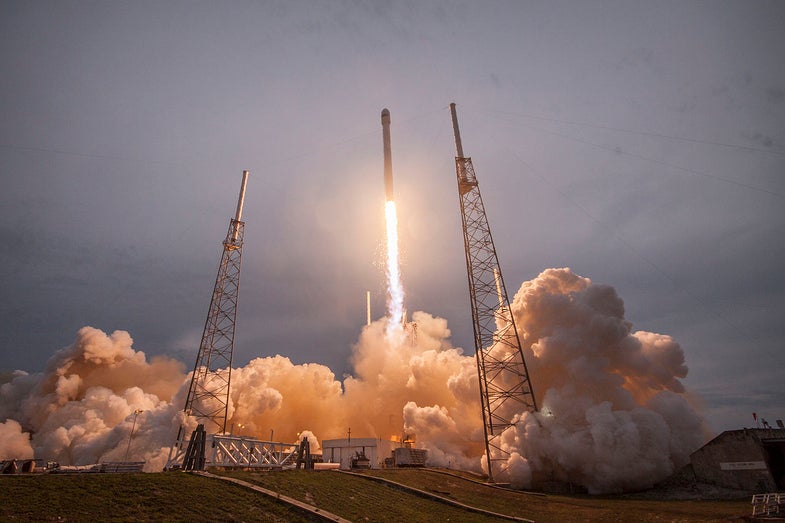SpaceX’s Reusable Rockets Could Cut Launch Prices 30 Percent
A $43 million ride to space

SpaceX’s Falcon 9 rocket is already dramatically slashing the cost of launching stuff into space. A SpaceX launch costs about $61 million, compared to $225 million for a ULA launch (ULA stands for United Launch Alliance, a joint venture between defense giants Boeing and Lockheed Martin). And once the company manages to reuse its rockets, that could bring the price down by another 30 percent, SpaceX president Gwynne Shotwell announced recently, to $43 million.
Reusability is key to getting that discount. Instead of dropping every used rocket booster into an oceanic graveyard, SpaceX is learning to safely land its boosters so they can be refueled and reused.
The company has managed to land one rocket so far, although it hasn’t tried to reuse that booster, choosing instead to preserve it as a historical object. Tests indicate the used rocket was in decent enough shape that it could fly again. That seems plausible since competitor Blue Origin is already reusing its rockets, although its New Shepard rockets don’t fly nearly as high or as fast as SpaceX’s.
The company is hoping to re-fly a used Falcon 9 booster later this year.
In addition to ensuring the recycled boosters are in decent enough shape to fly again safely, SpaceX will need to prove that it can land the boosters on a drone barge.
Many launches take the Falcon 9 on a trajectory over the ocean, and the autonomous landing pads provide the only means of recovering those boosters. However, it is understandably not easy landing a fast-moving, 15-story rocket on a moving target in the sea.
SpaceX will again try to nail the barge landing after an April 8 launch to the International Space Station.
[Via Spaceflight Now]